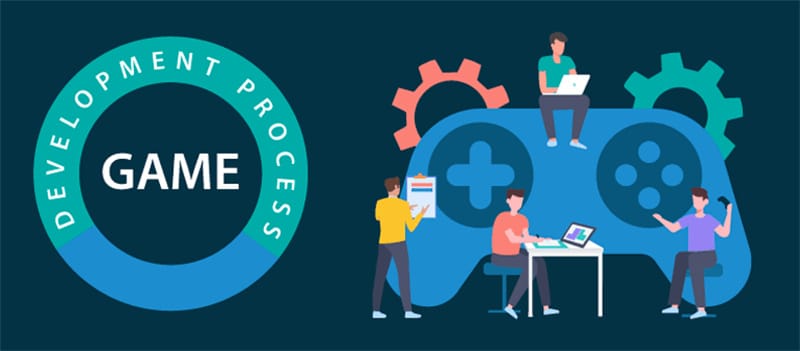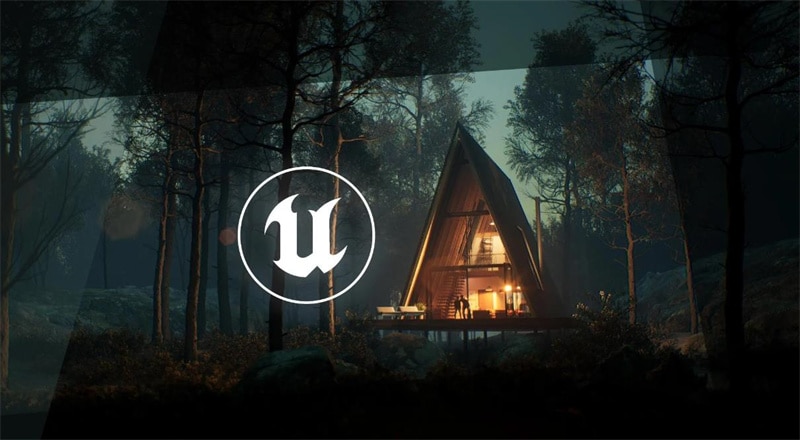Learn the tips and tricks of Unreal Engine game development to create an outstanding game. Get expert insights and guidance to bring your vision to life. Start developing your dream game today.
Unreal Engine is a game engine developed and maintained by Epic Games. It has become one of the most popular game engines in the world, with many game developers opting to use it for their projects. The engine offers a wide range of features, including advanced graphics and physics simulation, scripting, and support for virtual reality and augmented reality.
With the increasing competition in the gaming industry, it is essential for game developers to create games that stand out from the rest. Outstanding games are those that are visually appealing, have engaging gameplay mechanics, and provide a memorable gaming experience for the player.
The purpose of this article is to acknowledge people with the game development, and to dive into Unreal Engine game development. This guide covers various aspects of game development, from the basics of game design to advanced techniques for creating a game that will capture the attention of players and keep them engaged. Whether you’re a beginner or an experienced game developer, this article provides valuable information on how to create a top-notch game using Unreal Engine.
Understanding the Game Development Process

Conceptualizing the Game
This is the stage where the idea for the game is generated and defined. The concept of the game is created based on what the developers want to achieve, who the target audience is, and what the competition looks like. The core gameplay mechanics, story, setting, and characters are defined at this stage.
Pre-production: Research and Planning
In this stage, the concept is further developed and fleshed out. The game’s design and mechanics are outlined, and the necessary resources are identified. This includes the development team, budget, and time frame for completion. Pre-production also includes market research to ensure that the game will be successful.
Production: Development and Testing
This is where the actual development of the game takes place. The game design and mechanics are implemented, and the game is built. This stage is where the bulk of the work is done, and it can take several months or even years, depending on the complexity of the game. The game is also tested during this stage to ensure it’s fun and free of bugs.
Post-production: Fine-tuning and Release
In this stage, the final touches are added to the game, and any remaining bugs are fixed. The game is polished and tested one last time before it is released to the public. The marketing and distribution plan is also put into action, and the game is made available for purchase or download. This stage is crucial for the success of the game as it ensures that the final product is of the highest quality and reaches the target audience.
Game development process involves several stages, each of which is important for the success of the final product. From conceptualizing the game to fine-tuning and release, the development process requires careful planning, attention to detail, and collaboration between the various teams involved.
Essential Components of an Outstanding Game
Video games have come a long way since their inception. Today, games are designed to provide players with a unique and immersive experience that goes beyond just entertainment. To achieve this, developers must focus on several key components to create a truly outstanding game. In this essay, we will explore the four essential components of an outstanding game: Unique and Engaging Storyline, Intuitive Gameplay Mechanics, High-Quality Graphics and Sound Design, and User-Friendly Interface.
Unique and Engaging Storyline
A game’s storyline is what drives the player’s engagement and provides a sense of purpose. It should be unique, captivating, and well-written. A great storyline should have well-developed characters, an interesting plot, and a clear progression of events. A well-written storyline provides players with a sense of investment, making them care about what happens to the characters and the world they inhabit. It also gives players a reason to keep playing, providing a sense of accomplishment when they complete the game.
Intuitive Gameplay Mechanics
Gameplay mechanics are the set of rules and mechanics that govern how a player interacts with the game world. These mechanics should be intuitive, easy to understand, and challenging enough to keep the player engaged. Players should be able to pick up and play the game without having to spend too much time learning the controls. The mechanics should also provide a sense of progression, allowing the player to improve their skills as they play. Additionally, they should offer different play styles to cater to different player preferences.
High-Quality Graphics and Sound Design
Graphics and sound design play a crucial role in immersing players in the game world. High-quality graphics and sound design help to create an immersive atmosphere and enhance the player’s experience. The graphics should be visually appealing and provide a realistic representation of the game world. The sound design should also be well-crafted, with sound effects that are appropriate for the game world and music that sets the mood and enhances the player’s experience.
User-Friendly Interface
A user-friendly interface is critical to the overall player experience. The interface should be intuitive, allowing players to easily navigate through menus, access options, and interact with the game world. The interface should also be customizable, allowing players to tailor it to their preferences. A user-friendly interface makes it easier for players to get into the game, providing a smooth and enjoyable experience.
Unreal Engine Tools and Techniques

Unreal Engine is a popular and powerful game engine that offers a vast array of tools for creating high-quality games and interactive experiences.
The engine’s toolset includes everything you need to create 3D models, animations, and environments, as well as tools for scripting and logic, visual effects, and lighting. With Unreal Engine, you can create a wide range of games and experiences, from first-person shooters and platformers to VR experiences and beyond.
Overview of Unreal Engine’s toolset
- General components:
- 3D modeling and animation tools
- Scripting and logic tools (Blueprints)
- Visual effects and lighting systems
- Asset management tools
- Post-processing effects
- Importing Assets:
- FBX
- OBJ
- Alembic
- Blueprint System:
- Player controls
- AI behavior
- Interactions
- Logic and functionality
- Visual Effects:
- Particle system
- Fire, smoke, water effects
- Lighting System:
- Dynamic lighting
- Real-time global illumination
- Reflections
- Post-processing Effects:
- Bloom
- Lens flares
- Color correction
Unreal Engine’s toolset is an incredibly powerful and comprehensive suite of tools that provides everything you need to create high-quality games and interactive experiences. With its extensive array of tools for creating assets, scripting and logic, visual effects, and lighting, Unreal Engine is an ideal choice for unreal engine game development.
Best Practices for Unreal Engine Game Development
- Collaboration and Communication: Effective communication and collaboration between team members is critical in game development. This can be achieved by setting clear project goals and regular check-ins, using version control systems such as Git, and utilizing Unreal Engine’s built-in collaboration features such as the Source Control Integration.
- Testing and Iteration: Regular testing and iteration are essential for ensuring the quality of your game. You should establish a testing plan and schedule, and regularly test your game on various platforms and devices. You should also make use of Unreal Engine’s built-in tools for debugging and performance profiling to optimize your game’s performance.
- Performance Optimization: Performance optimization is key to creating a smooth and responsive game. This can be achieved by optimizing your game’s graphics and audio settings, reducing the number of draw calls, and making use of Unreal Engine’s performance optimization features such as dynamic lighting and occlusion culling.
- Staying Up-to-Date with Unreal Engine Updates: Unreal Engine is continuously evolving, and it’s essential to keep up-to-date with the latest updates and features. You should regularly check for engine updates and new plugins, and familiarize yourself with the latest Unreal Engine documentation and tutorials. Staying up-to-date will help ensure your game remains competitive and utilizes the latest technology.
Final Thoughts
In conclusion, creating outstanding games with Unreal Engine requires a combination of technical skills, creative vision, and attention to detail. The engine provides a robust set of tools and resources that enable developers to bring their ideas to life, whether they are building a cutting-edge 3D action game or a simple 2D platformer.
With its user-friendly interface, flexible scripting system, and a large community of developers who are always sharing tips, tutorials, and code snippets, Unreal Engine offers a complete solution for game development.
By leveraging the engine’s features and working closely with a talented team of artists, designers, and programmers, game developers can create engaging and memorable games that will captivate players for years to come.
